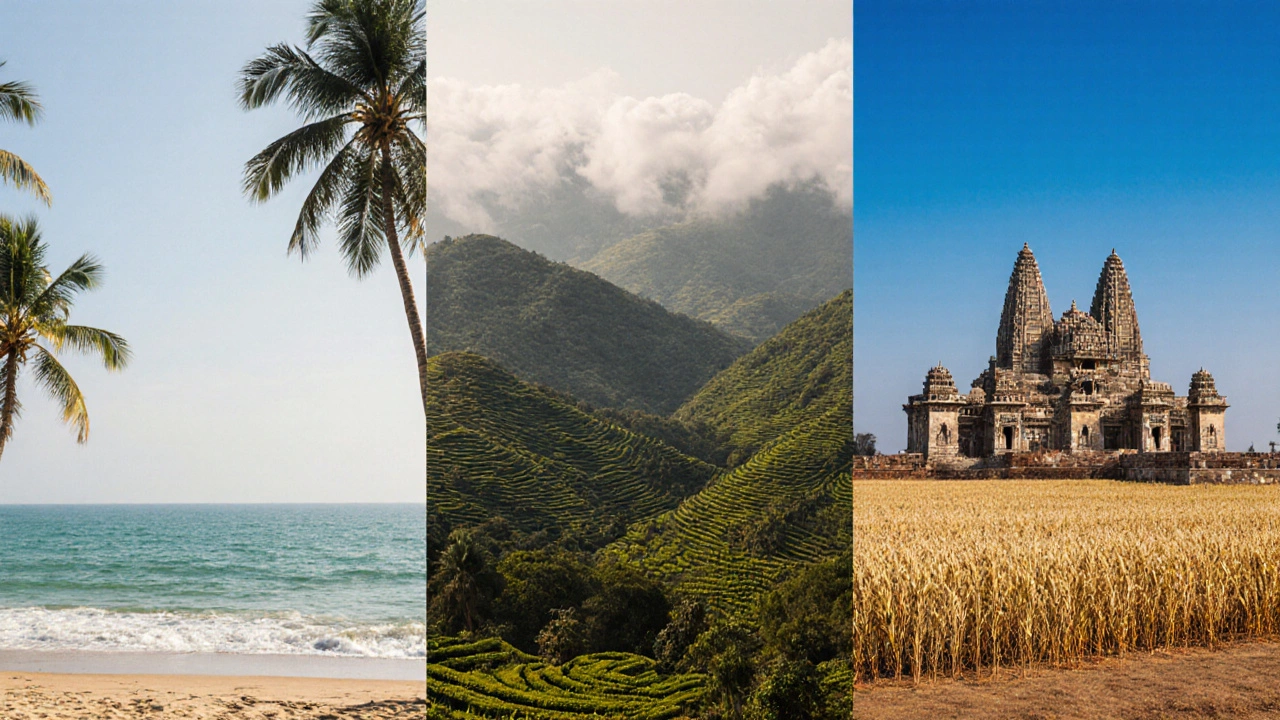
Discover the ideal month for a South India tour with detailed weather, festivals, crowd levels, and budget tips, plus a sample itinerary and FAQs.
When planning a trip to the south coast, checking South India weather is crucial. When working with South India weather, the seasonal patterns of temperature, rainfall, and humidity across the southern states of India. Also known as southern Indian climate, it helps travelers pick the right month for beaches, hill stations, or cultural festivals.
The first factor most people miss is the Monsoon season, the period from June to September when most of southern India receives heavy rainfall. This rain can turn coastal roads slick and make outdoor sightseeing tricky, but it also greens the landscape and powers spectacular waterfalls. Knowing when the monsoon hits lets you decide whether you want lush scenery or dry, sunny days.
Next up is the Temperature range, average highs from 25°C on the coast to 35°C inland during summer, and cooler 15‑20°C in hill areas. Coastal cities like Chennai stay warm year‑round, while hill stations such as Ooty drop down to comfortable evenings. Matching your comfort level with the expected temperature saves you from packing the wrong clothes.
Travel planning relies heavily on climate awareness. If you aim for beach fun, the dry months of November to February offer calm seas and clear skies. For wildlife spotting in Karnataka’s national parks, the post‑monsoon months of October and November bring abundant water and active animals. Festival lovers can align visits with celebrations like Onam in August, which coincides with the early monsoon but still offers vibrant cultural experiences.
Another piece of the puzzle is humidity. Coastal humidity can feel oppressive in summer, but indoor air‑conditioned transport and early morning outings make it manageable. In contrast, the interior plateaus experience lower humidity, which feels fresher even when temperatures rise.
Altitude adds another layer. The Western Ghats receive heavy rain during monsoon, creating misty trekking trails, while the Deccan plateau stays relatively dry. Knowing the altitude‑related weather helps you choose appropriate footwear and gear.
Routing decisions also hinge on weather. For road trips from Kerala to Tamil Nadu, the monsoon can cause landslides on mountain passes, so many travelers switch to rail or delay the journey. Conversely, the post‑monsoon period often sees improved road conditions and scenic waterfalls along the way.
In short, understanding South India weather lets you tailor your itinerary, pack smart, and avoid surprises. Below you’ll find articles that dive deeper into specific states, travel tips for each season, and advice on how to make the most of your Indian adventure.

Discover the ideal month for a South India tour with detailed weather, festivals, crowd levels, and budget tips, plus a sample itinerary and FAQs.